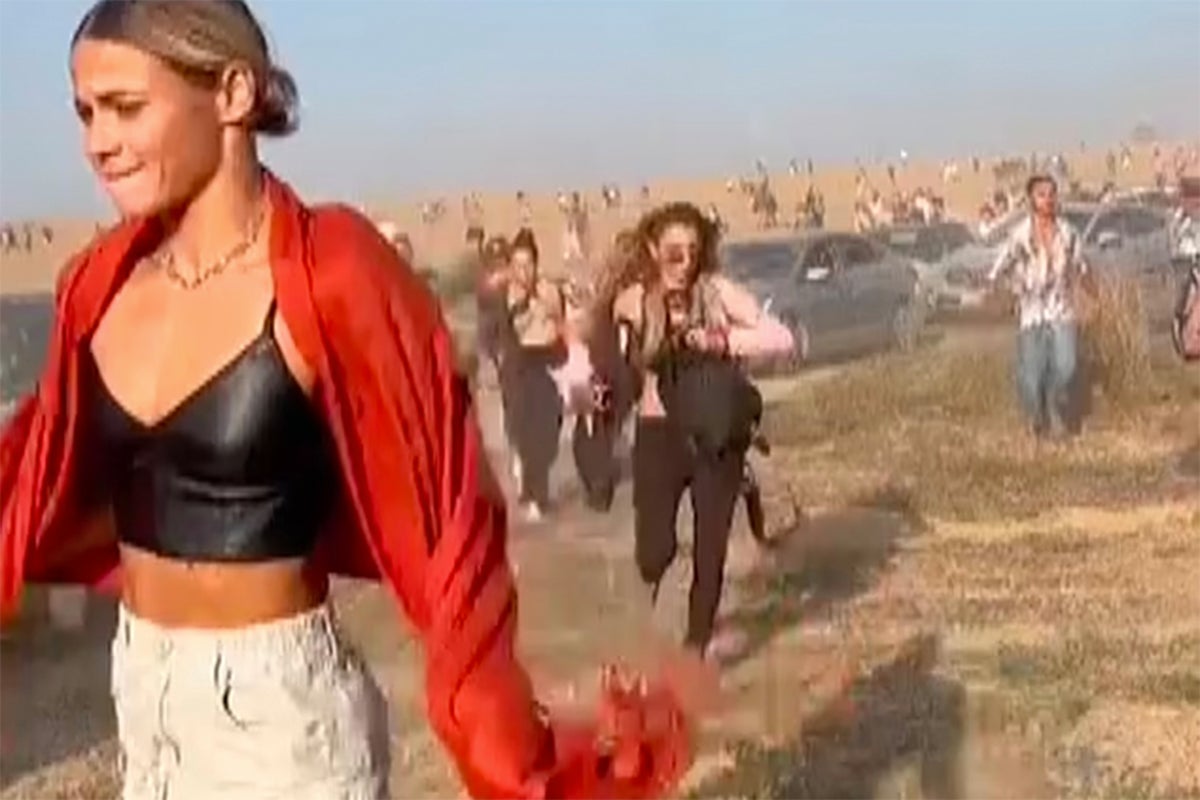Mapped: How the Israel-Hamas war unfolded


Israel is at war after Hamas militants broke through the border from Gaza to inflict the deadliest attack the country has suffered in half a century.
The surprise and highly sophisticated incursion, a major failure of much-vaunted Israeli intelligence, has claimed the lives of more than 700 civilians and soldiers living close to the Gaza border, with the Israel Defence Forces (IDF) still seeking to root out militants embedded in Israeli settlements two days later.
In retaliation, Israel has launched relentless air strikes on Gaza and its tightly-packed civilian population – among whom Israel says Hamas militants are hiding – and has declared a “complete siege” of the enclave by cutting off supplies of electricity, food and fuel.
The unprecedented attack has raised fears of the conflict spilling over, with all eyes on Hamas’s allies in Lebanese militant group Hezbollah and their backers in Iran, while the United States is sending military “assistance” to Israel.
The incursion unfolded without warning at 6:30am on Saturday, nearly 50 years to the day since the outset of the brutal Yom Kippur war, with Hamas launching thousands of rockets into Israel and sending warning sirens blaring as far afield as Tel Aviv and Jerusalem.
Announcing “the start of Operation Al-Aqsa Flood”, Hamas military chief Mohammed Deif said the group had “targeted enemy positions, airports, and military fortifications” with more than 5,000 missiles and shells.
Footage released by Hamas suggests they used drones to blow up border observation posts and weapons systems, with one militant filmed flying into Israel on a motorised paraglide, in a possible ode to the “night of the gliders” incursion during the run-up to the first Intifada uprising in 1987.
Minutes later, Hamas used explosives and other means to breach the border fence, with fighters pouring through in at least four locations – on foot, in vehicles and on motorbikes – reportedly near the northern Erez border crossing, Kerem Shalom in the south, and Nahal Oz and Be’eri in the east.
Multiple military outposts – some lying several kilometres from the frontier – were stormed, with soldiers reportedly killed and taken captive.
Also directly in the path of the militants were thousands of partygoers attending the Supernova psytrance festival, a rave held in the Negev desert, not far from the Re’im millitary base, which houses the IDF’s Gaza Division and was among the three outposts targeted, alongside bases at Erez and Zikim.
Revellers first saw the barrage of rockets fly overhead before militants armed with assault rifles and grenades, gunning down revellers as they tried to flee on foot and in cars, and taking at least one hostage back to Gaza on the back of a motorbike.
Israeli rescuers say at least 260 bodies have been recovered from the site of the festival, with aerial footage showing the burnt-out remains of cars apparently abandoned as people attempted to escape.
One woman said she had survived by playing dead in a car after the driver trying to help her escape was shot, while another told the BBC she had hidden under a tree for three hours while gunmen roamed the area shooting all in their sight.
Elsewhere, militants rampaged through settlements near the border, opening fire as terrified Israeli residents hid in safe rooms commonly installed in their homes. The Independent was told of one family in the neighbourhood of Nirim forced to hide for nine hours with a 10-day old baby.
Bodies were pictured lying in the streets in Sderot, and at the height of the incursion on Saturday the IDF said it was fighting to dislodge militants from 22 locations, which it later reduced to eight.
By Sunday morning, Hamas said its fighters were still engaged in the towns of Sderot, Yad Mordechai, Kfar Azza, Be’eri, Yatid, Kissufim and Ofakim, the latter of which sits some 15 miles from the border. Footage broadcast that afternoon showed a gun battle breaking out on the Route 4 highway between Ashdod and Gaza, as terrified motorists ducked for cover.
By Sunday, Israel had announced the deaths of 600 people, with 100 taken hostage.
Moments after the incursion began on Saturday, Israel said it was responding with hundreds of air strikes on Gaza, as news footage showed missiles raining down on high-rise buildings in the background of reporters’ live broadcasts.
By Sunday, Israeli strikes had targeted old Gaza City, Khan Younis, and the southern city of Rafah, killing hundreds and injuring thousands. One man told the Associated Press that 19 members of his family including his wife were killed when an airstrike hit their home in Rafah.
As well as housing blocks, Israeli air strikes have now so far hit a hospital, a mosque and the densely populated Jabalia refugee camp.
Accusing Hamas militants of deliberately hiding among civilians, Mr Netanyahu on Saturday gave the trapped residents of the 2.3 million-strong enclave just 24 hours to evacuate, despite them being unable to do so due to Israeli and Eygyptian border controls.
As the onslaught continued on Monday, Palestine’s health ministry said that 560 people in Gaza had been killed and some 2,900 wounded, as fears grew of a large-scale humanitarian catastrophe.
xnxx,
xvideos,
porn,
porn,
xnxx,
Phim sex,
mp3 download,
sex 4K,
Straka Pga,
gay teen porn,
Hentai haven,
free Hentai,
xnxx,
xvideos,
porn,
porn,
xnxx,
Phim sex,
mp3 download,
sex 4K,
Straka Pga,
gay teen porn,
Hentai haven,
free Hentai,




